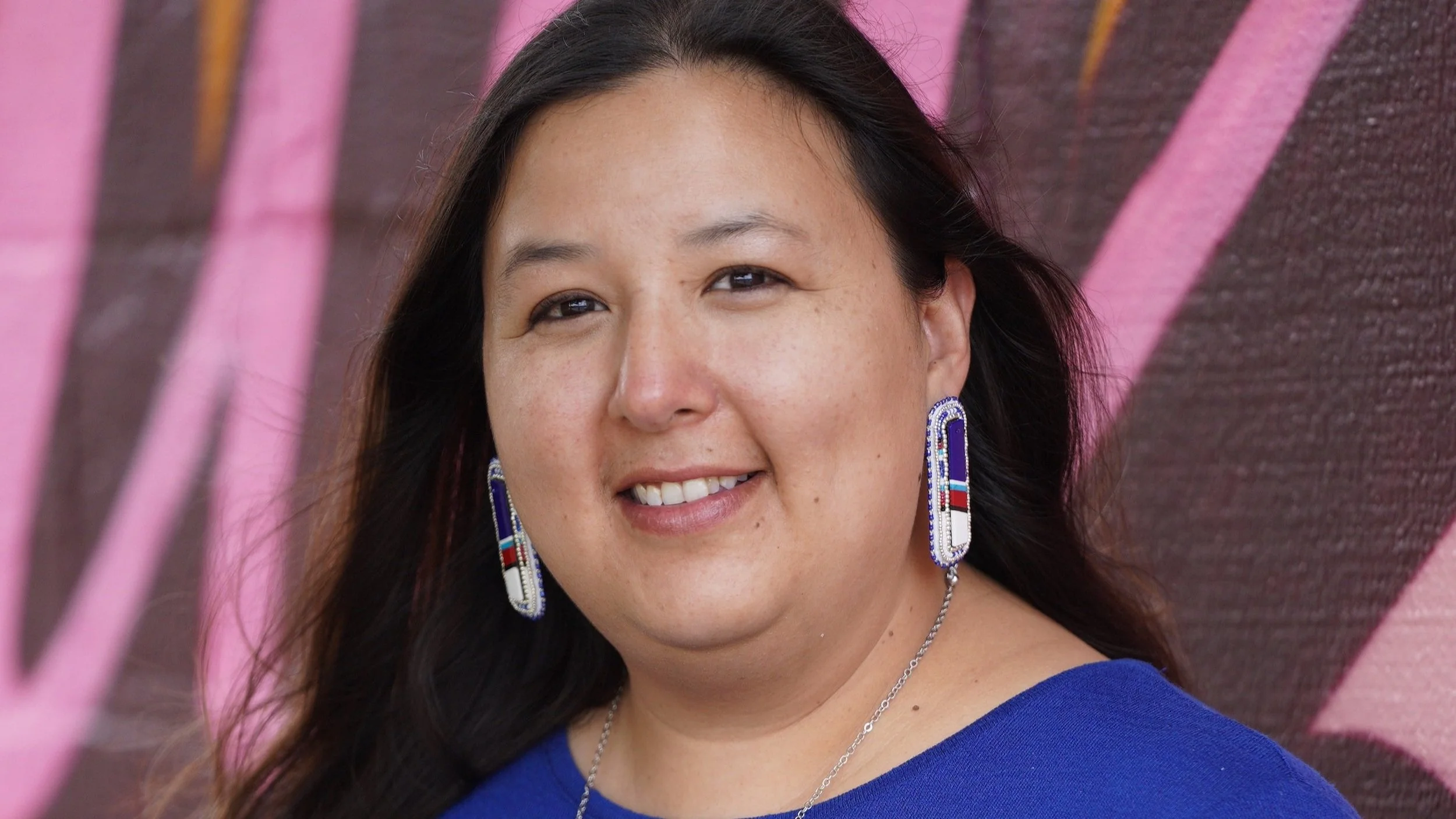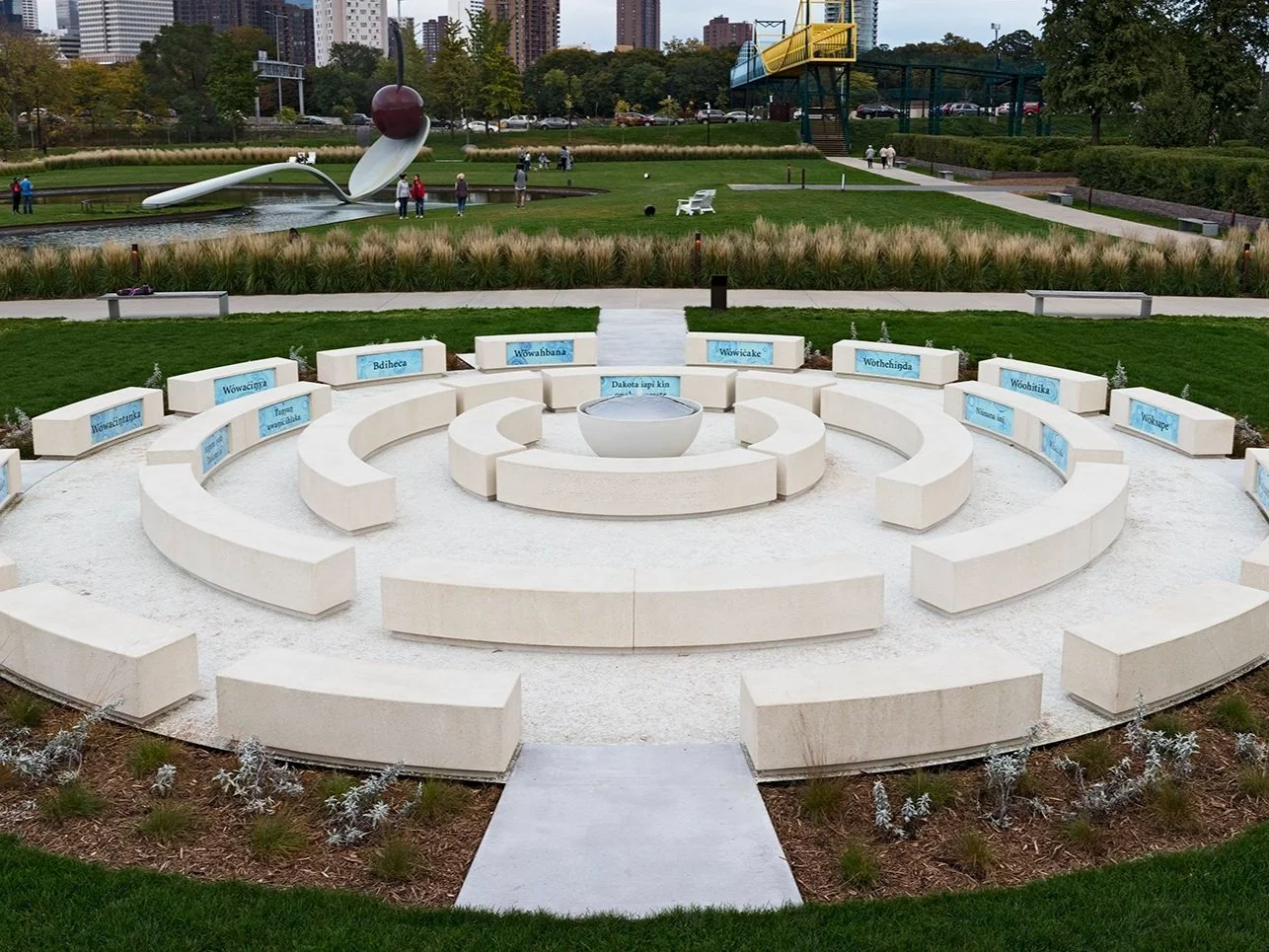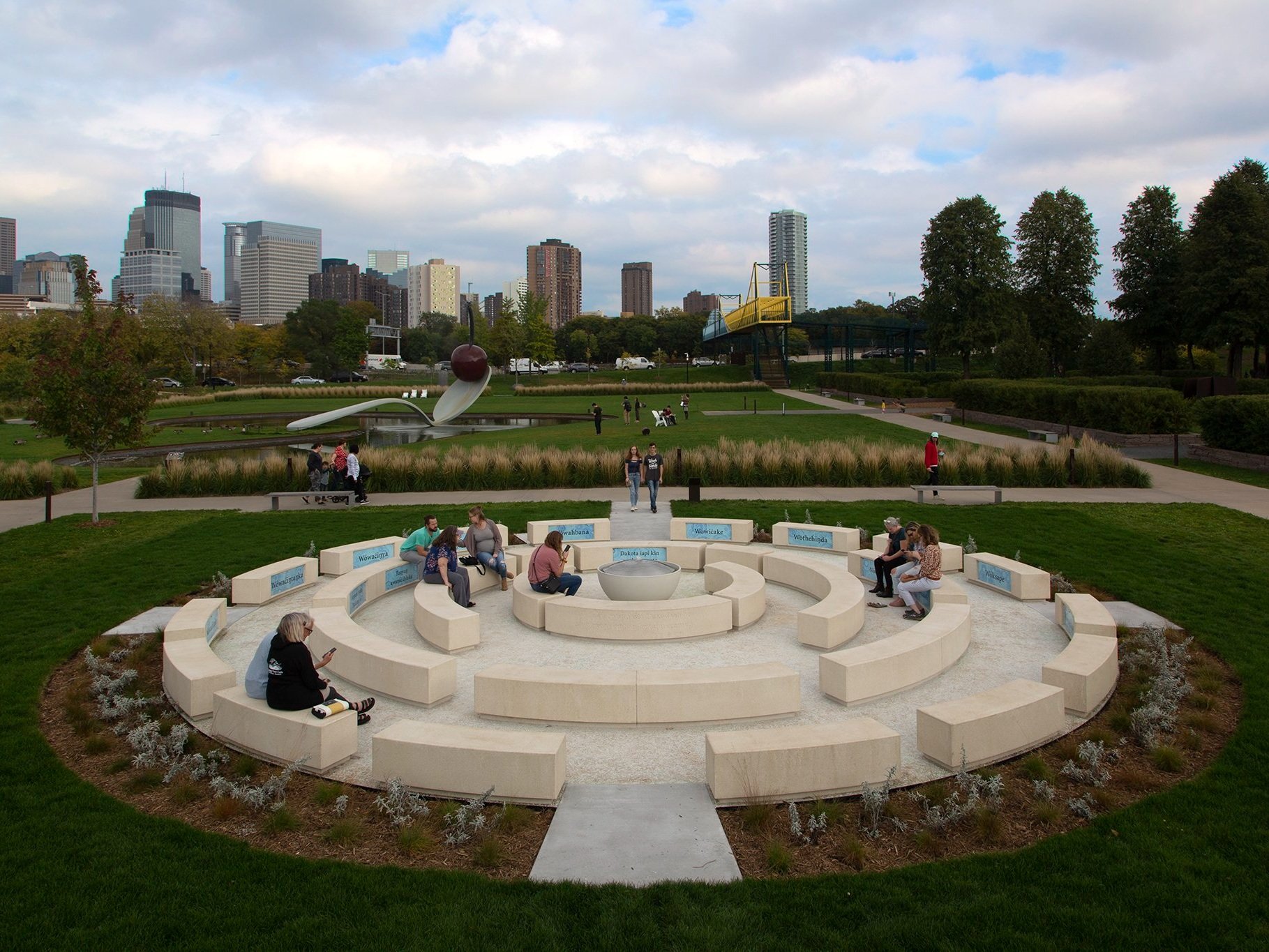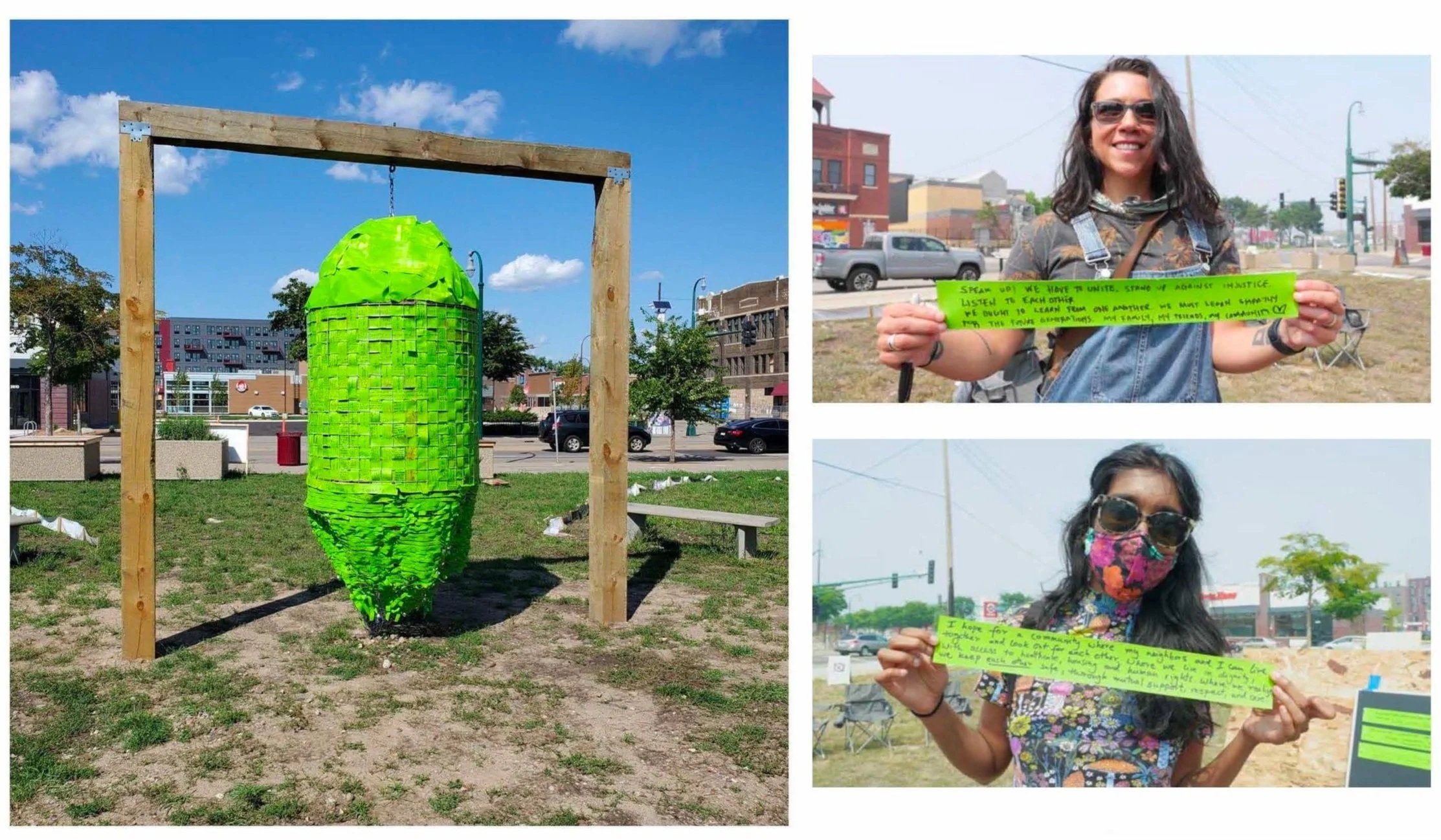The Power of Art & Language as Tools for Healing
Angela Two Stars
Minneapolis, Minnesota
Written by Breanne Finch
For Angela Two Stars, Sisseton Wahpeton Oyate member, the power of art and language can be used to heal and connect. With her art, she has strived to do just that, creating thought-provoking pieces that inspire and teach. She has accomplished a great deal since she began her career as a public artist in 2017, demonstrating the value of perseverance matched with talent. As a wife and mom of three, her path may have taken longer than some, but she hasn’t slowed down since, her career taking off like a rocket. As the current director of All My Relations Arts at NACDI (Native American Community Development institute), she has found her place working to uplift Native artists during their journey. Two Stars has experienced firsthand the impact that NACDI’s work can have, describing how the organization gave her some of her first big opportunities as an artist. In 2016 NACDI gave her the opportunity to be a part of her first professional exhibition, and as a new artist, receiving that first big yes was pivotal. Although she may not have known it at the time she was already walking into her destiny.
Under the Surface; We are All the Same, 2021, St. Paul, MN
Okciyapi, 2021, Minneapolis Sculpture Garden, Walker Art Center
Okciyapi, 2021, Minneapolis Sculpture Garden, Walker Art Center
From then, NACDI helped connect her with her first public art opportunity. This was a project honoring her great great great grandfather, with whom she only knew his name, Mahpiya Wicasta (Cloud Man). She saw this as an opportunity to learn more about him and to meet new family members; little did she know that she would become a featured artist. Her career continued to pick up speed, NACDI inviting her to be a first-time curator for an exhibition focused on Missing and Murdered indigenous women, providing her with the creative control to bring her ideas to life. The exhibition was so powerful, it spawned two additional exhibitions and also traveled regionally. These opportunities she received are a testament to NACDI’s mission of supporting Native artists and Angela has picked up that baton, striving to give the help she received.
It is important to note that even with the best of help, one must still walk their own path. There are many challenges Angela has had to overcome during her journey, such as racism and dealing with the perceived narrative of what Native art looks like. Describing herself as the tip of the arrow, she aims to confront these challenges head on so that Native artists after her won’t face those same barriers. The most powerful way to do this, she believes, is to speak up. When speaking up, you never know who else you’re speaking for. You may not be the only person experiencing something and she admits using her voice has helped her gain confidence. As someone who advocates for other artists, she is also learning to be better at advocating for herself. She credits her ancestors for her strength, resilience, and overall ability to preserve through any struggles she faces.
The Transitions Stage, 2021, temporary community art installation, Minneapolis, MN
One of her greatest accomplishments in her still budding career is becoming the first Native artist to have work featured at the Minneapolis Sculpture Garden. The Okciyapi (help each other) titled piece holds a special place in her heart not just because it honors her grandfather and his Dakota language revitalization efforts, but because it symbolizes her own healing journey. She was able to share the vulnerability of her own efforts to learn her language and struggles she faced during that journey while also addressing healing from historical and intergenerational traumas through reconnecting with the Dakota language. For her, it is important for those seeking to learn the Dakota language to keep going, keep learning no matter how long it takes, because it is worth the pursuit and so much healing comes from it.
For Angela, art is healing in itself. Art can translate narratives that can’t be put into words. At NACDI they tackle tough topics like homelessness, MMIW epidemic, Native invisibility, and artists have the ability to communicate these heavy issues in a visual language that the audience can comprehend without feeling overburdened. An understanding comes that doesn’t feel like an attack. Art also speaks for the community, making it a priority for her to help Native artists become more visible. She believes that the younger generation see themselves in the art, which may be why she puts so much passion into her work. When the art is reflective of the community, its members can feel a sense of ownership over the space. And with that we can say Angela Two Stars is accomplishing her goal.





